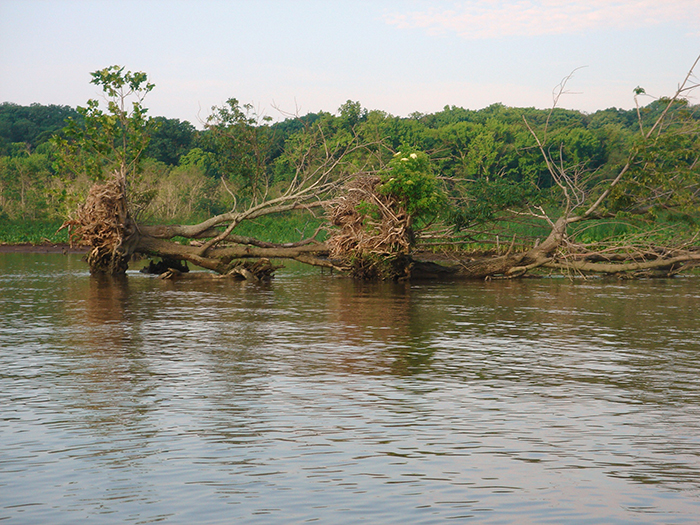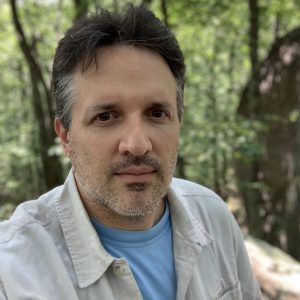
Wetlands Watch and the Virginia Outdoors Foundation recently announced that $91,195 has been awarded to 14 projects from the first round of the Coastal Resilience and Tree Fund (CRTF).
CRTF grants support implementation of resilient practices and enhance the ability of organizations and government agencies to plan for future implementation of resiliency projects within the coastal zone. Project that are eligible for funding include those that:
- Achieve increased resilience to flooding, sea level rise, and extreme weather events in Virginia’s coastal communities.
- Increase tree canopy in the Coastal Zone and raise awareness of the value of trees as a best management practice and component of resiliency.
- Raise public awareness about the role of nature-based solutions in improving community resilience.
- Enhance the ability of organizations and government agencies to plan and implement resiliency projects within the Coastal Zone.
VOF provides funding for CRTF and Wetlands Watch administers the grants. Learn more at https://wetlandswatch.org/coastal-resilience-trees-fund.
Project titles, descriptions, and award amounts are detailed below.
CAPACITY BUILDING PROJECTS
Bamboo Harvest, Eradication and Replacement with Keystone Native Plants – $2,500
Project Summary: This project aims to develop and document a three-fold plan to clear a mature bamboo patch, to use cut bamboo to weave a privacy screen as an alternative to the screening between neighbors the bamboo now provides, and to plant in its place a mix of keystone native shrubs, trees, and perennials that benefit native insects and birds. Small, low bamboo fences across the drainage to slow run-off on the sloping site are also a potential use of this time-honored raw material.
SHORELINE PROTECTION PROJECTS
Elizabeth River Project Resilience Lab Living Shoreline – $10,000
Project Summary: The project, known as the Ryan Resilience Lab, will consist of the redevelopment of the property at 4610 Colley Avenue, an innovative facility on Norfolk’s Knitting Mill Creek, which will demonstrate sustainable and flood-resilient building and landscaping practices. The Lab’s Learning Park will include a living shoreline, demonstrating how to hold off erosion while restoring oyster and wetland habitats.
Knitting Mill Creek Mayflower Road Riparian Buffer Phase 1 – $10,000
Project Summary: This proposal hopes to raise awareness for Knitting Mill Creek and address stormwater and tidal flooding on the West side by adding plant diversity and stormwater filtration with native grasses and flowering plants. By adding rich habitat for wildlife, it will also serve as an interpretive planting to showcase native plants. The goal is to display the beauty of native vegetation and help motivate residents and business owners to enhance habitat and improve community resilience.
Living Shoreline Williamsburg – $10,000
Project Summary: To build a living shoreline to protect the shore and minimize sediment running into the Chickahominy/James Rivers.
Reichenbacker Shoreline Protection – $10,000
Project Summary: 3,600 SF of upland wetland riparian buffer to be installed upland 100′ of natural shoreline at Buchanan Creek, a tributary of the Lynnhaven River feeding into the Chesapeake Bay in Virginia Beach. The planting will replace turf and bare soil where erosion is actively occurring, decreasing stormwater runoff with the deeply rooted plants, native to our area’s coastal plant communities. These 23 species may host at least 445 species of butterflies and moths in our area.
Replacing a Decaying Bulkhead with a Living Shoreline – $10,000
Project Summary: The project will replace rotting bulkhead with a Living Shoreline, both dynamic and resilient, unlike a hardened solution. The project will use an oyster reef sill to create viable habitat. Behind the reefs, sand with marsh grass plants, protected by an Envirolok growth bag system, will create erosion control in the upper tidal and storm surge zone. The combination will prevent marine waters from contacting soluble clays at the shoreline and provide a path for living organism migration as conditions change.
GREEN INFRASTRUCTURE PROJECTS
LRNOW Green Infrastructure – $5,000
Project Summary: The Lynnhaven River NOW office is located just South of the Windsor Woods neighborhood in an area that is well known for stormwater flooding. The location has a back lot that floods during heavy rains. This project will install a rain garden to catch and infiltrate stormwater, reducing runoff and flooding. The project will be designed and installed by a new environmentally friendly landscape firm with a CBLP Level I member under the supervision of a CBLP Level II LRNOW staff member. It will also serve as a demonstration rain garden for Virginia Beach residents that are interested in this type of best management practice.
McKendree Green Infrastructure – $6,700
Project Summary: The McKendree property is on a low lying peninsula surrounded by wetlands in the Back Bay watershed. The property has a low bulkhead that is frequently topped by windblown tides and a vegetated berm behind that to protect the homesite. Increased storm intensity has resulted in a combination of wind driven tides and heavy rainfall threatening the home with stormwater and windblown flooding. This project will install a 125 gallon rain barrel to capture roof runoff in a low lying area at the back of the house, a 4×20 foot rain garden to capture runoff from the roof and patio, and enhance the buffers along the shoreline.
STEWARDSHIP PROJECTS
Invasive Plant Management & Natural Area Restoration Along Appomattox River Blueway-Greenway Corridor – $3,900
Project Summary: Friends of the Lower Appomattox River will continue the development and implementation of a strategic, sustainable, and comprehensive invasive species management program, that will improve forest health and resilience, including plant diversity and habitat and natural areas and educate and empower community members to become actively involved in volunteer stewardship. This program will also increase the accessibility of parks, trails, and natural areas for the community.
Restoration Area in the James River Park System – $5,000
Project Summary: The approximately two-acre wooded Rapids Restoration Area in the Pony Pasture unit of the James River Park System has been a focus of invasive management for eight years, primarily removal of dense wintercreeper ground cover and Amur honeysuckle shrubs. Though there has been a healthy rebound of many native plant species, the understory continues to suffer from a paucity of native species diversity and requires restoration support.
Stewardship of the Bellemeade Green Street Project – $5,000
Project Summary: The James River Association and Groundwork RVA are working together to maintain the Bellemeade Green Street on the southside of the City of Richmond. Project stewardship activities include adding soil and mulch to stormwater best management practices installed along Minefee Street in 2021 and replacing trees, shrubs, and herbaceous plants that have died since they were planted.
TREE PLANTING PROJECTS
Nichols Park Tree Planting – $5,000
Project Summary: The Nichols Park neighborhood is a densely populated area of town homes with a small landscaped filter strip between the sidewalk and the street. Large trees (mostly red maples) were originally planted in the filter strip and they have grown too large, causing damage to the sidewalks and poor health of the trees. A total of 33 native redbud and 33 native fringe trees will be planted in the filter strips and ten additional large native trees will be planted in the wet turf grass area to reforest the area. The project will improve stormwater management through filtration and transportation, decrease surface temperatures with shading, and sequester carbon through carbon uptake.
Tree Funding Proposal from the Friends of Dyke Marsh – $3,250
Project Summary: Dyke Marsh is a freshwater tidal marsh on the Potomac River in Fairfax County. Dredging from 1940 to 1972 destabilized the marsh, impairing its natural protection from tidal and storm surges. The emerald ash borer is destroying 1,000 to 1,200 dead pumpkin ash trees, the primary tree species in the intertidal zone. It is unlikely that dead tree roots can stabilize the marsh sediments. We propose to plant appropriate trees in stages to preserve the tidal marsh and its ecological functions.
Tree Planting in Oceana West Neighborhood of Virginia Beach – $4,845
Project Summary: The City of Virginia Beach has a goal of achieving a 45% tree canopy by 2045. As of 2018, the city was at 40.3% canopy, showing a net loss of 1.34% from 2012. Current funding accounts for replacing trees removed, but not enough to overcome the tree loss on private property. This grant money will be used to plant trees in Oceana Gardens West, which is an environmental justice area and in proximity to the Hilltop Area of the city, which is a heat island.
